8 Beginner Golfer Mistakes... And How To Fix Them!
In this video and article, Golf Monthly Top 50 Coach John Howells sets out eight beginner golfer mistakes... and how to fix them!
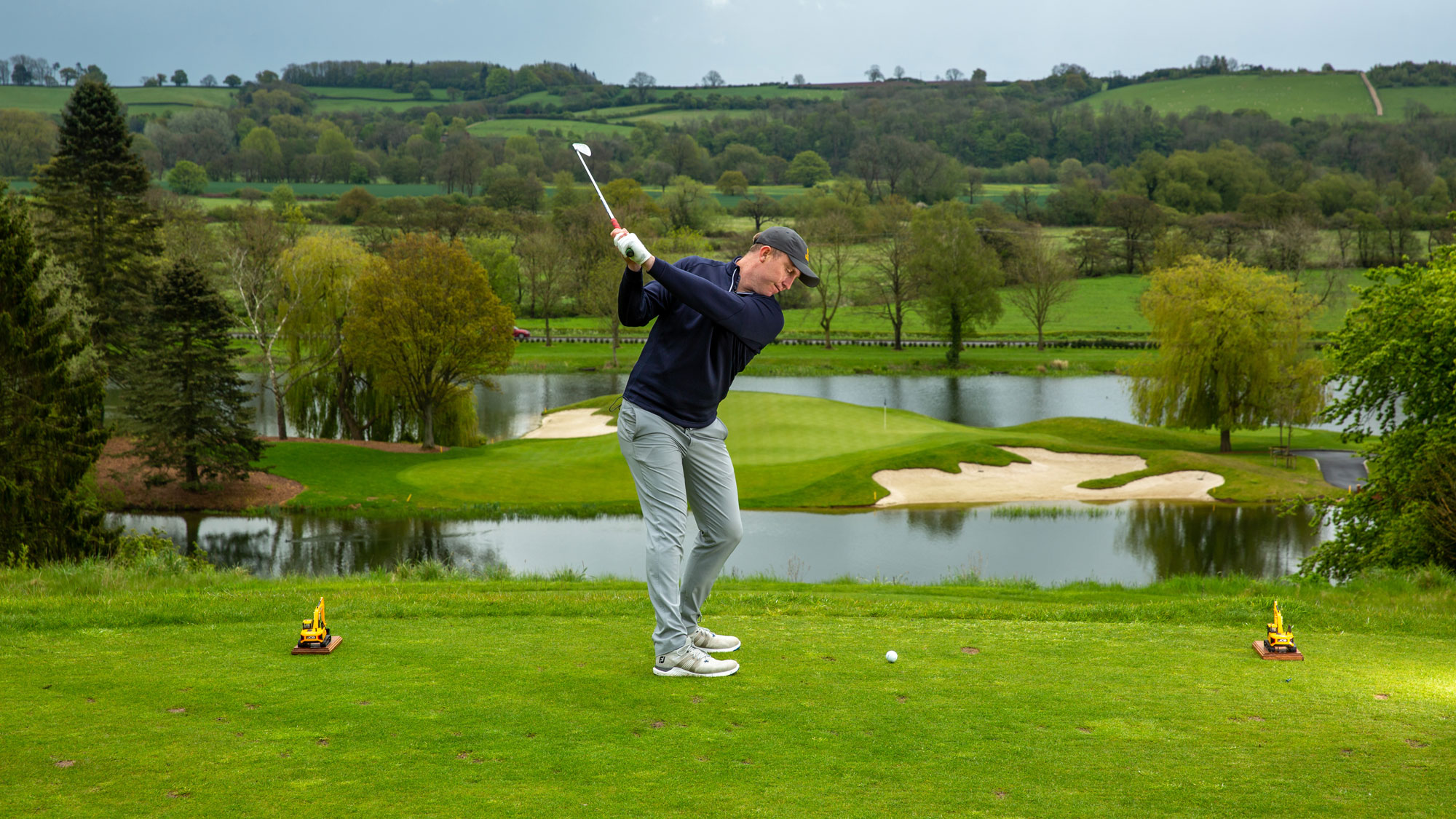

When you are first getting into golf, you will likely have questions around fundamental concepts like how far to stand from the ball or how to create the perfect grip... but not falling into common beginner golfer mistakes is also important.
By not getting into bad habits, you have a much better chance of enjoying golf and shooting lower scores. In this video and article, Golf Monthly Top 50 Coach and head professional at JCB Golf and Country Club, John Howells, discusses 8 mistakes you might make and how to fix them...
1. Knowing your distances
As well as learning the basics like the correct ball position and how to hit a driver, you also need to understand how far you can hit each of your clubs. This is often something tour player do that amateurs don't, but without knowing this information you could come up short or even overshoot the green.
Using realistic averages, based on an accumulation of shots you have hit with each club, will help you to feel more dialled in with your golf game. One way to do that is, if you have access to a practice range, hit a series of 10 shots on a calm day with your 9-iron and, if safe to do so, walk out onto the practice ground and place your bag roughly in the middle of the bunch of shots.
You can then walk back to where you hit from and laser the yardage. Repeat that for each club. If you don’t have access to a practice ground, you can try and do something similar on the course. The key is to take your yardages not from your best shot or worst shot but somewhere in the middle.
2. Backswing stability
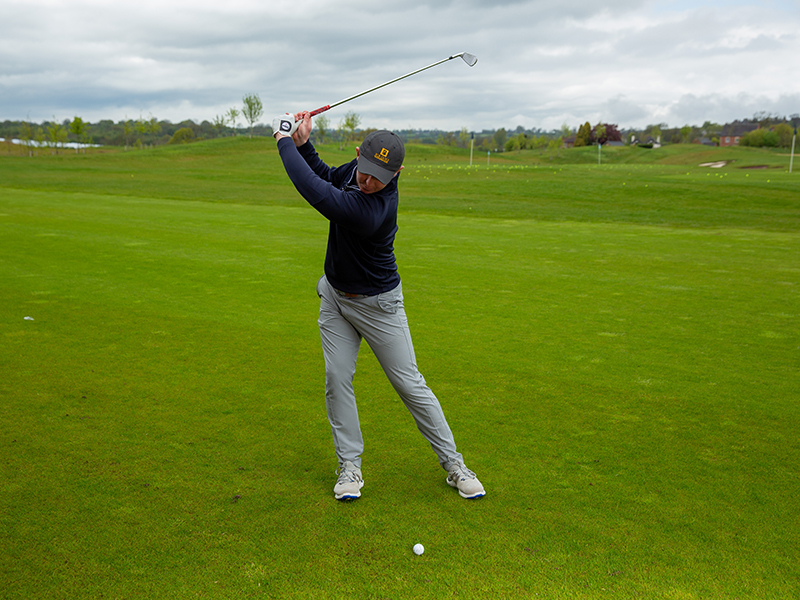
Swaying in the backswing, as demonstrated above, is a recipe for disaster
Swaying in the backswing is one of most common faults for beginners. This unnecessary movement requires a lot of compensation in the downswing to prevent a poor strike.
A great backswing drill is to place an alignment stick next to your right hip at address (there should be about an inch of separation between your hip and the stick). Aim to swing to the top without touching the stick, as this will give you immediate feedback on whether you are swaying.
Get the Golf Monthly Newsletter
Subscribe to the Golf Monthly newsletter to stay up to date with all the latest tour news, equipment news, reviews, head-to-heads and buyer’s guides from our team of experienced experts.
3. Play the percentages
Golf is often a game of managing errors. Minimising damage when you aren't playing well, or when the ball is spraying all over the place, will help you maintain a respectable score and lower your handicap.
Pick a target, and imagine a large circle around it – similar to a centre circle on football. If any part of the imaginary circle is in contact with any trouble (water, sand or thick rough), adjust your aim until it doesn't.
You may have to aim away from the flag to achieve this, which is absolutely fine and a great way for beginners to build a good score.
4. Mastering impact
When you first start playing golf, one of the big mistakes to avoid is helping the ball into the air by leaning back through impact. This movement causes fat strikes, or the dreaded thin shot.
Trust that the loft on the clubface and the clubhead speed your produce will create the appropriate trajectory. By committing to the strike in this way, you will also create backspin in the air. Your impact position will therefore look different to your address position.
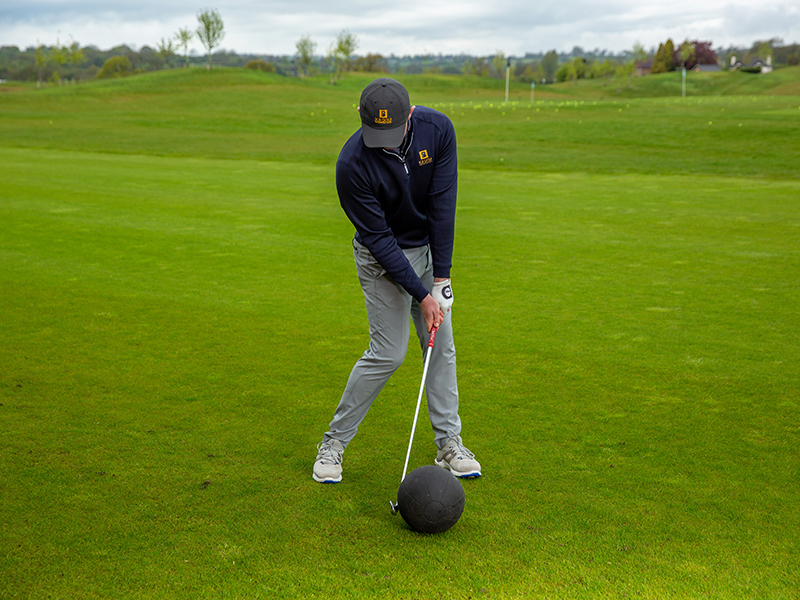
Notice how John's shoulders and hips are both slightly open, his hands are ahead of the ball and his weight is moving towards the target
Start with your shoulders slightly open to the target, with your hands a fraction in front of the ball. The image above demonstrates this position, but you also need to have your weight moving towards the target.
You can practice this by setting your impact position and then making a half swing from there, looking to recreate your pre-set impact as you strike the ball.
5. Clubface control
Hitting the golf ball straight is perhaps the hardest element of the game to master. The key is to have control of the clubface. That means taking care to set the perfect golf grip. A great checkpoint is the two ‘v's' between your thumb and forefinger on both hands. They should point towards your right shoulder. If you feel like your grip is good and you are still hitting a slice, try this drill.
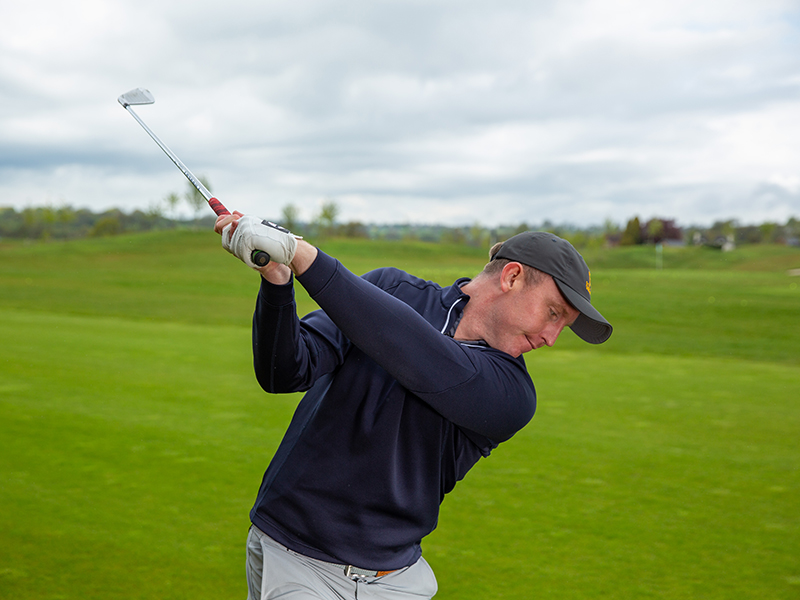
As well as checking your grip, how you set your wrists at the top of the swing will impact how you control the clubface
Swing to the top, pause and point the logo on your glove away from the target. Then carry on the swing. This will help you develop an understanding for the adjustments you might need to make to control the clubface during the swing.
6. Chipping strikes
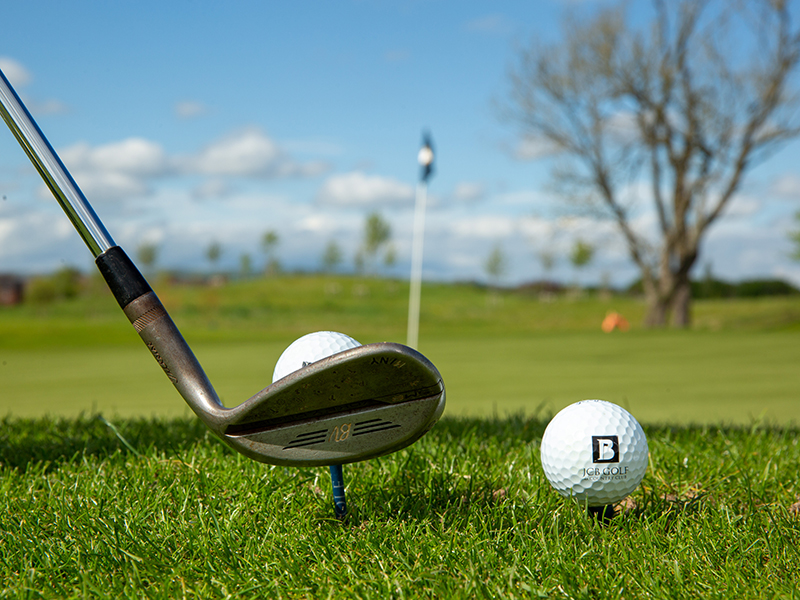
Practise chipping off a tee to improve your impact pattern and gain confidence
One of the most important parts of any beginner's guide to chipping is finding a consistently good strike. Don't worry about how to spin the golf ball at first as that will happen as a consequence of better contact.
Often, when golfers start playing, they set the ball too far back in the stance and the club digs through impact causing fat and thin contacts.
You can avoid this by moving the ball into the middle of your stance and setting your weight move evenly at address (i.e. not favouring your lead foot). This will help you find a shallower angle of attack using the bounce of the club through impact for a greater margin of error with the strike. Hit some balls off a tee in practice to develop the technique and your confidence.
7. Bunker strikes
The reason why many golfers struggle from sand is because they fail to open the clubface correctly before hitting the shot. In order open the clubface in golf effectively, you need to turn the club before you establish your grip. This will set the loft and crucially the bounce you need to play the shot correctly.

Put a handful of sand on the ground to work on your bunker play
A great drill to improve your bunker play is to take a clump of sand from the bunker and put it on the grass. Just make a swing and practice splashing that sand towards the green. Now do the same thing but put a ball on top and hit it towards the green. This illustrates how much sand to take but also it should help you develop a shallow angle of attack - making it the ideal bunker drill.
8. Picking the break
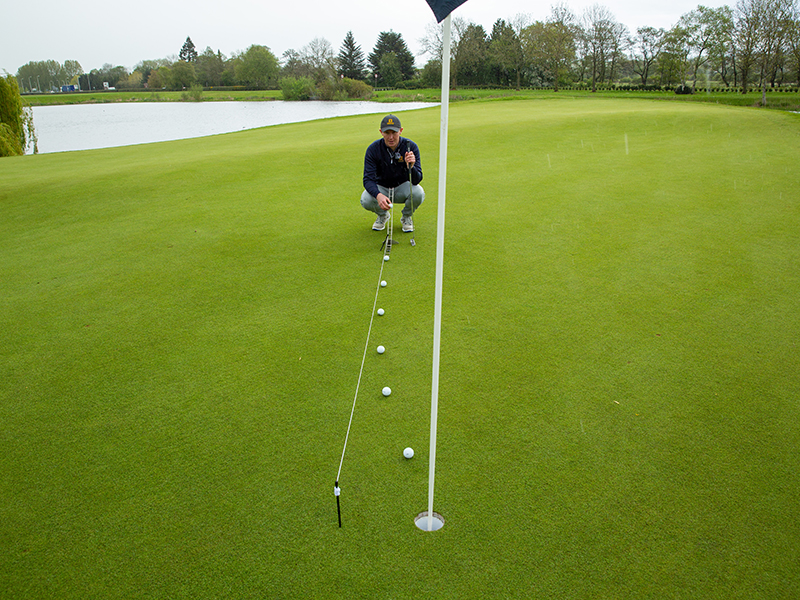
A common amateur mistake is not to allow for enough break when reading a putt
Learning how to read greens and hole more putts is a crucial skill to develop if you are looking to shoot lower scores. The beginner golfer mistakes to avoid here are not allowing for enough break. Golfers often get caught up either aiming at the hole or at the apex of the curve and this leads them to under-borrow. Try to visualise the roll the putt as a whole and you should be able to pick better start lines (above the apex of the curve) allowing for the right amount of break.

Location: JCB Golf & Country Club
John joined the JCB Golf & Country club after spending seven years as the Senior Instructor at the Butch Harmon School of Golf Dubai. His coaching style is very much holistic in nature and TPI physical screenings are an integral part. John is able to identify physical limitations that may affect your swing and he has worked with the likes of Darren Clarke, Michael Hoey, Steve Webster and Rayhan Thomas.
Biggest influence:
Without a doubt the six years I spent working for Butch Harmon. I worked there from 2012 to 2018 and had the ability to everyday learn from one of the best modern instructors in the world today, Justin Parsons, who was my mentor and boss. We also were very fortunate to meet and learn from Claude Harmon III and Butch. The time spent in Dubai was the most pivotal because being surrounded by excellence was so inspirational for me as an instructor. I was able to frequently watch tour players practicing on site and working with their personal coaches, I was able to shadow coaches such as Sean Foley working with Danny Willet, Alan Thompson working with Tommy Fleetwood.
Greatest teaching success story: Working with Rayhan Thomas for three years as his putting coach was a pretty special opportunity for me. Seeing him go on to win his first professional tournament at the 2016 Mens Tour Dubai Creek open where he set a world record equalling nine birdies in a row.
Biggest challenge:
There is a new wave of golfers coming through the Bryson DeChambeau era and I am cautious about how many young golfers will attempt to play the game the same way as he does over the coming 10 years. We could see a lot of young talented golfers fall by the wayside either through injury or not being able to move the same way that Bryson does. I am really supportive of golfers pushing the boundaries of human physical performance so I admire what Bryson has been able to do, however I am apprehensive as to what this might be doing to the way young golfers see the game as a weightlifter/crossed with golfer/crossed with long drive champion.
-
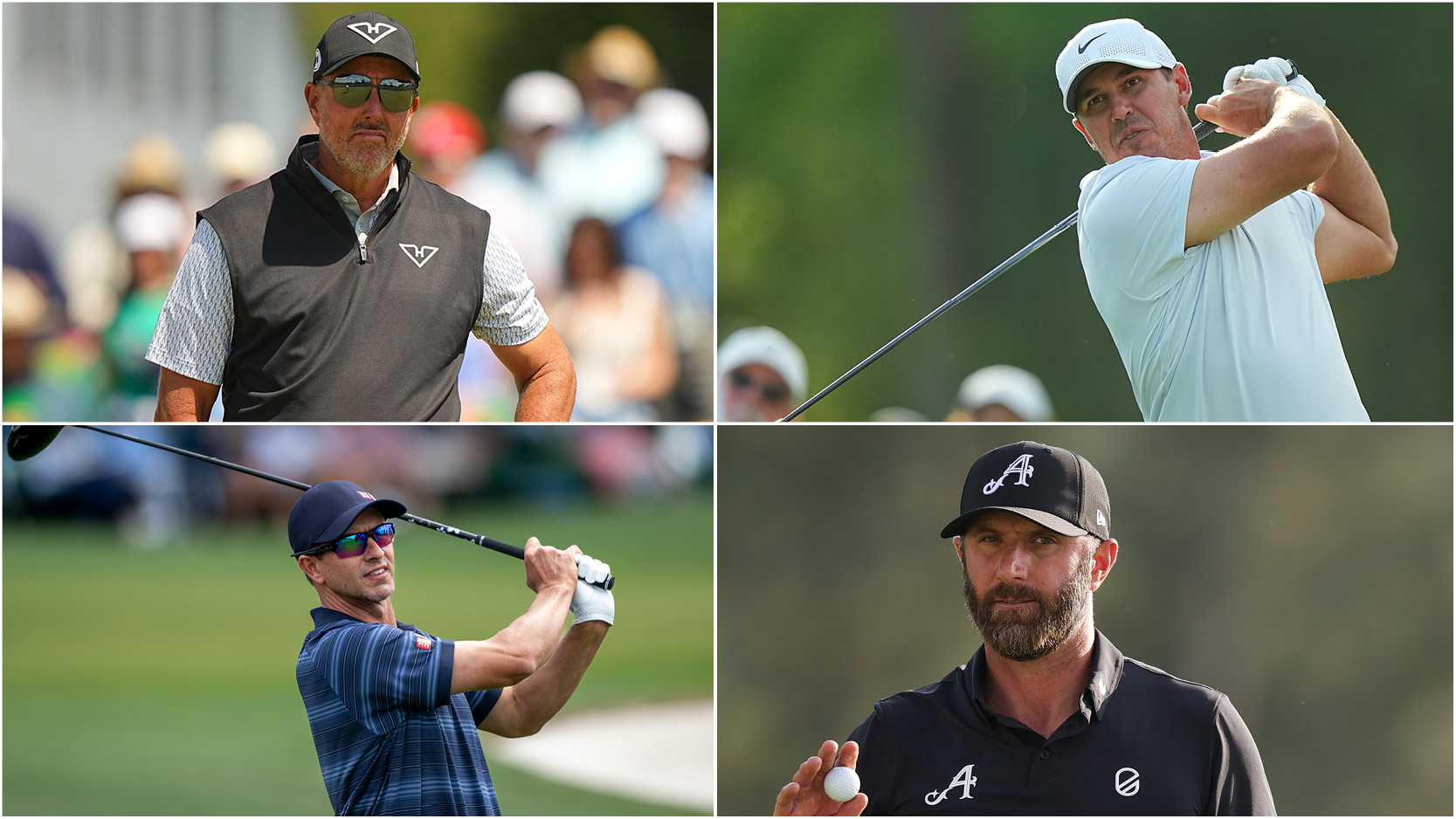 14 Big Names Who Missed The Cut At The Masters
14 Big Names Who Missed The Cut At The MastersAn exciting prospect is in-store over the weekend at The Masters, where a number of players missed the cut at Augusta National
By Matt Cradock Published
-
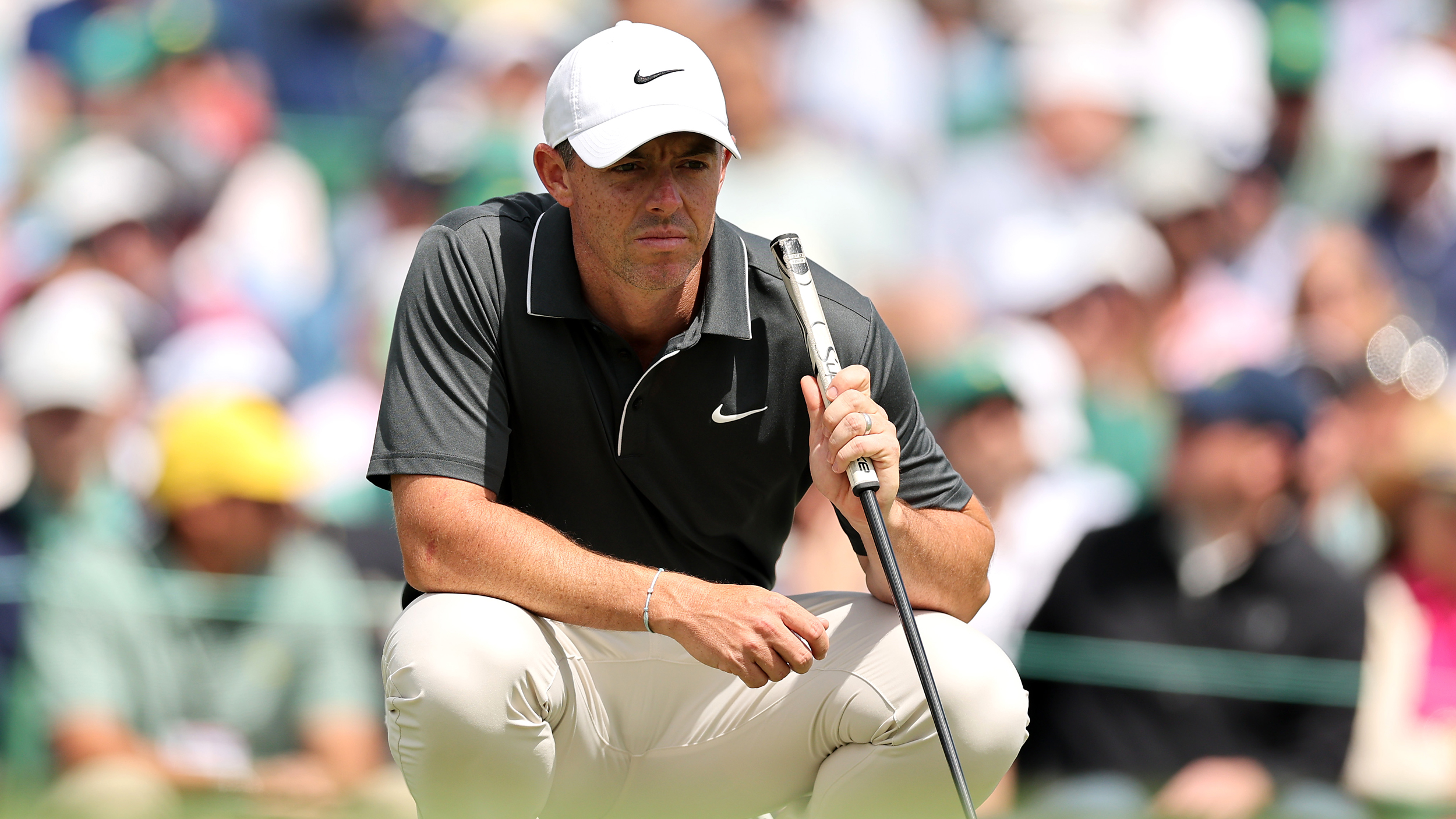 Why Rory McIlroy Is The Man To Beat At The Masters
Why Rory McIlroy Is The Man To Beat At The MastersWe look at three reasons why Rory McIlroy is in the driver's seat for the Green Jacket this weekend
By Elliott Heath Published